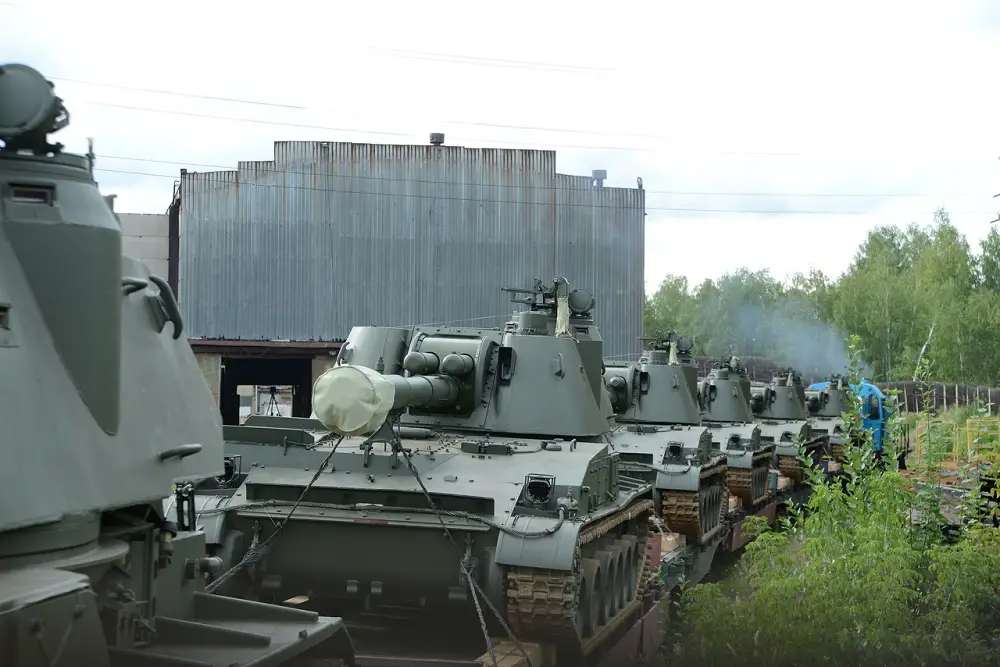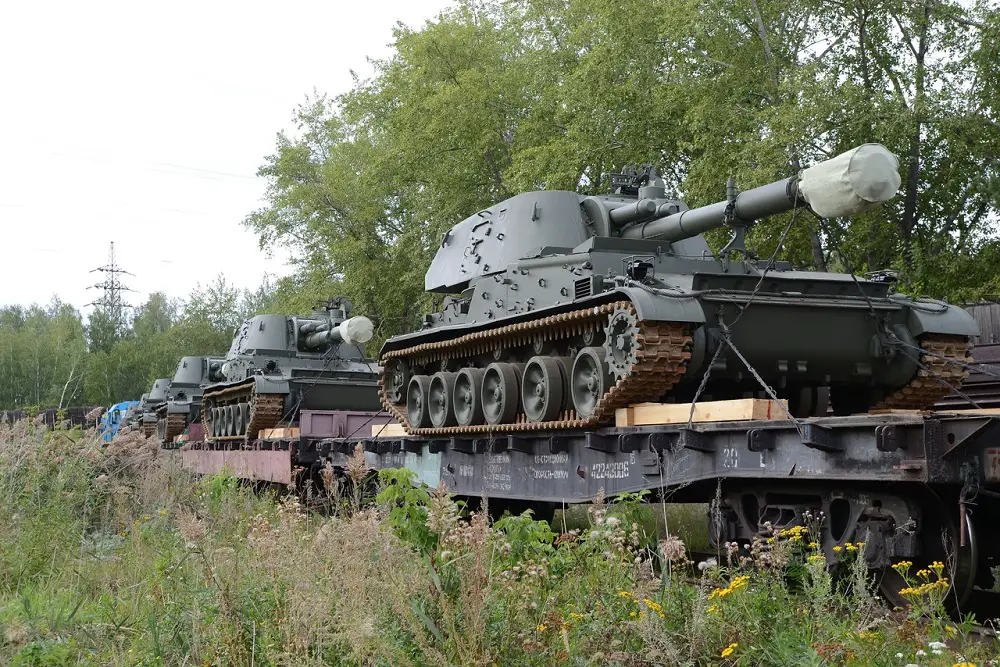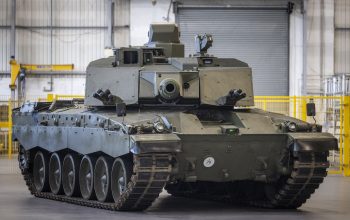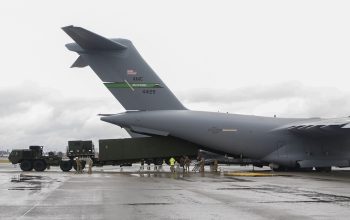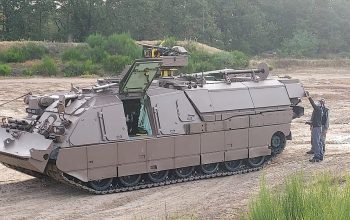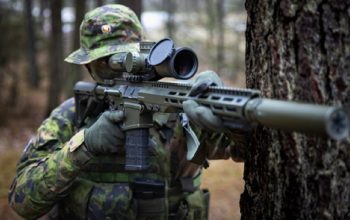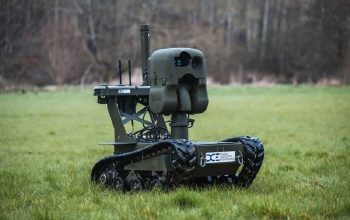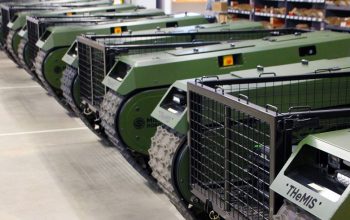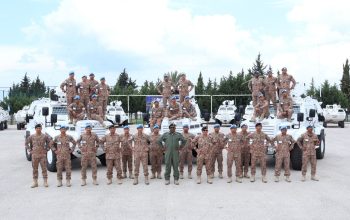Russia has sent 2S3M Akatsiya self-propelled howitzers to Belarus under the 2022 contract after their major repairs, the press office of the Uralvagonzavod defense manufacturer (part of the state tech corporation Rostec) reported on Thursday. As part of fulfilling two 2022 contracts, Uraltransmash within Uralvagonzavod has sent 2S3M Akatsiya self-propelled howitzers to the Republic of Belarus after their major repairs. Uraltransmash carries out major repairs of 2S3M guns and upgrades Akatsiya howitzers to the 2S3M level The vehicle features improved communications means, a higher rate of fire and a larger ammunition load while imported components have been completely replaced.
The SO-152 (Designated M1973 by the U.S. Army) is a Soviet 152.4 mm self-propelled gun developed in 1968. It was a response to the American 155 mm M109. The fighting vehicle also received the additional designation Akatsiya, which is Russian for acacia. The Akatsiya is armed with a 152.4 mm howitzer based on the Soviet 152.4 mm D-20 howitzer. The artillery system was developed at the design bureau No. 9 of Sverdlovsk. The factory designation of the howitzer is D-22 and the GRAU designation, 2A33. The chassis was developed by Uraltransmash. The first three serial 2S3s were built by Uraltransmash in the end of 1970, and in 1971 nine were produced. The works received an order for 70 2S3 in 1973. The mass production finished in 1993.
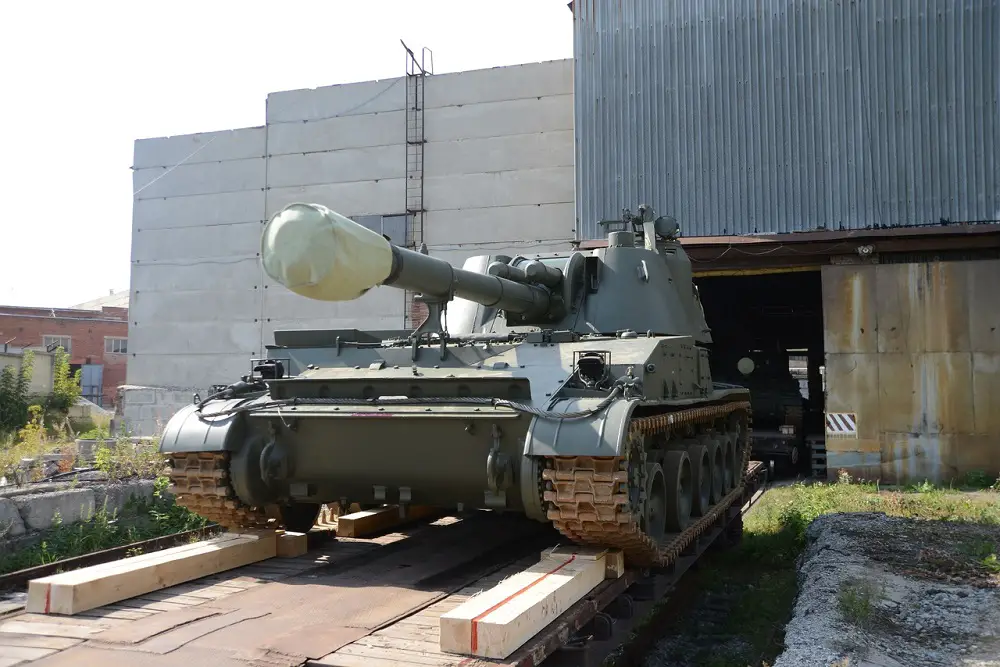
Equipped with a mechanized drum-type stowage for 12 rounds, the amount of hatches in rear armored plates of the hull and the turret was reduced, the configuration of those hatches was changed, antenna of R-123 radio set was transferred on a turret top. Ammunition was increased from 40 to 46 rounds (usually consists of 42 OF-540 and OF-25 HE-Frag projectiles, and of 4 BP-540 HEAT-FS projectiles). The Akatsiya can fire OF-540 and OF-25 HE-Frag 43.56 kg projectiles at a maximum range of 18.5 km depending on used charge or rocket assisted projectiles to a maximum of 24 km. Other projectiles available to the Akatsiya include BP-540 HEAT-FS (sight distance is 3 km, 250 mm armor penetration), Br-540B and Br-540 AP-T (115–120 mm armor penetration at a 1000 m), OF-38 Krasnopol laser-guided rocket-assisted projectiles, S1 illuminating, ZH3 smoke, nuclear projectiles (with explosive capacity of 2 kt).
Uraltransmash (The Ural Plant of Transport Engineering) is a company based in Yekaterinburg, Russia. Currently it is a subsidiary of Uralvagonzavod. The company is one of the oldest enterprises in the Ural: its history is more than two hundred years old. Uraltransmash is Russia’s primary producer of self-propelled artillery. In the second half of 1941, collectives of evacuated enterprises from Moscow, Podolsk and Stalingrad were housed in the buildings of the plant. The installation of new equipment began and soon the first light tank T-60 went to the front from the plant. Since then, the plant has developed or modernized about forty types of military equipment. In 1989, Uraltransmash produced its first self-propelled howitzer, the 2S19 Msta. Modifications of the Msta-S are still being supplied to the Russian army.
